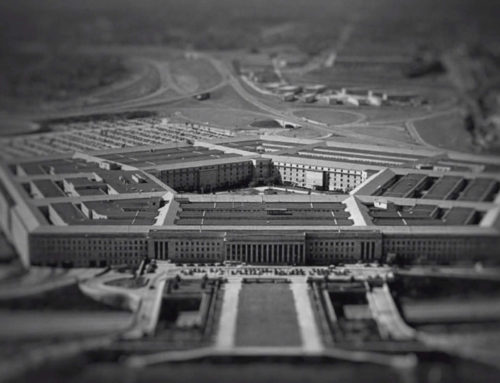Following Israel’s surprise attack on Iran earlier this month, many Americans were concerned over the prospect of U.S. involvement in yet another costly Middle East war.
Over the weekend, that concern sharpened when President Trump ordered a surprise attack on Iran’s nuclear facilities, and the possibility of a costly full-scale conflict between the U.S. and Iran loomed large. Since then, a cease-fire has been agreed to, but the situation is far from resolved.
Taxpayer Costs
As a budget watchdog, let’s start with the immediate costs. During a Pentagon press briefing following the strikes, Chairman of the Joint Chiefs of Staff Gen. Dan Caine explained that, “In total, U.S. forces employed approximately 75 precision-guided weapons during this operation. This included, as the President stated last night, 14 30,000-pound GBU-57 Massive Ordnance Penetrators, marking the first ever operational use of this weapon.” He also explained that a U.S. submarine launched over two dozen Tomahawk cruise missiles at Iran as part of the attack, and that more than 125 aircraft—including the B-2 bombers, 4th and 5th generation fighters, dozens of refueling planes, and an array of intelligence, reconnaissance, and surveillance aircraft—participated in the mission.
The cost of the Massive Ordnance Penetrators, informally known as bunker buster bombs, is difficult to pinpoint because the Pentagon’s budget justification books only list the requested appropriations amounts, not the number of units. But a 2011 contract for eight MOPs came to $28 million, suggesting a rough price of $3.5 million per bomb. Adjusted for inflation, the cost of these bombs today could be upwards of $5 million apiece, perhaps more considering upgrades that have taken place since then.
The costs of a tomahawk missile is somewhere between $1.2 million and $2.5 million per unit, according to the Navy’s budget justification books. If we conservatively assume 25 Tomahawks were fired, the cost of those missiles would range from $30 million to $62.5 million.
That still leaves as many as 36 weapons that Gen. Caine did not specify in his description of the weapons employed in the attack.
So, just accounting for the bombs we can identify, U.S. taxpayers have likely spent between $100 million to $132.5 million in one evening bombing Iran. Given dozens of unspecified weapons and all the support aircraft involved, it’s likely that this operation cost taxpayers hundreds of millions of dollars.
Gauging Efficacy
When gauging the cost of an operation like this, it’s important to identify the goals and determine the extent to which they were met. According to President Trump, “Our objective was the destruction of Iran’s nuclear enrichment capacity and a stop to the nuclear threat.” While the president called the mission a “spectacular military success,” fully assessing the impact on Iran’s nuclear capabilities is a complex process that could take weeks if not longer.
Details of a top-secret Defense Intelligence Agency (DIA) assessment leaked to CNN (among others), which cited four people briefed on the assessment, reportedly found that the strikes “did not destroy the core components of the country’s nuclear program and likely only set it back by months.” DIA has since stressed that its findings were preliminary and issued with “low confidence,” and the administration, including its top intelligence leaders, have claimed that Iran’s nuclear facilities were destroyed in the attack. While questions on the extent of the destruction, Iran’s remaining nuclear facilities, and the location of its stockpile of highly enriched uranium remain unanswered, it’s clear that U.S. and Israeli attacks on Iran’s nuclear program and personnel have set it back. Whether by months or years is unclear.
As for the immediate risk of escalation, while Iran struck back at a U.S. military base in Qatar, it gave the U.S. advance warning of the attack, helping to ensure no U.S. casualties, and opening a door for de-escalation, which President Trump walked through. Following the attacks, the president announced a ceasefire between the U.S., Israel and Iran, and while reports indicate that both Israel and Iran violated the ceasefire early on, it appears to be holding.
However, should the ceasefire collapse, or should future efforts at diplomacy fail to verifiably prevent Iran from obtaining nuclear weapons, a return to war is possible, and the costs could spiral quickly. President Trump, as well as his predecessors, have clearly articulated the policy goal of preventing Iran from obtaining a nuclear weapon. While these strikes appear to have significantly degraded Iran’s nuclear program, they have not destroyed it completely, and they do not preclude it from rebuilding.
The U.S. intelligence community had repeatedly asserted that it did not believe Iran was pursuing a nuclear weapon, and following the ceasefire, Iran’s president Masoud Pezeshkian voiced openness to returning to diplomacy and said that Iran is “simply seeking its legitimate rights and has no demands beyond this, and definitely has not and will not seek a nuclear weapon.”
Still, whether or not Iran was pursuing a nuclear weapon in the past, some analysts have warned that these strikes could convince Iran to pursue nuclear weapons now. Whether or not it does may be difficult to assess now that Iran’s parliament has approved a measure to end all cooperation with the International Atomic Energy Agency (IAEA), cooperation which was already limited by Iran’s failure to provide the agency with sufficient explanations of undeclared nuclear material and activities. But as Iran continues to maintain its right to a peaceful nuclear program, President Trump will likely face pressure to strike its facilities once again. And if those facilities are too deeply buried to be destroyed by U.S. bunker busters, then that could leave the president with three difficult options: accepting Iran as a nuclear power, pursuing diplomacy to limit or end Iran’s nuclear program, or sending in troops. While some have raised the prospect of Israeli forces leading a ground invasion, even the costs of supporting such a war with air and sea power would be significant.
It bears mentioning that this could have been avoided. A line can be drawn from President Trump’s decision to withdraw from the Iran nuclear agreement (which, as he repeatedly certified before withdrawing, was verifiably preventing Iran from obtaining nuclear weapons) to his decision to bomb Iran’s nuclear facilities.
War Powers
Was any of this legal anyway? It doesn’t appear so.
The decision to bomb Iran was not authorized by Congress, nor was it in response to any imminent attack. While Israel and Iran had been trading attacks for some time, the U.S. attack was clearly not about defending the U.S. or Israel from imminent attack—it only targeted Iran’s nuclear facilities, not the missile systems Iran has been using to strike Israel.
Pursuant to the War Powers Resolution of 1973, “The constitutional powers of the President as Commander-in-Chief to introduce United States Armed Forces into hostilities, or into situations where imminent involvement in hostilities is clearly indicated by the circumstances, are exercised only pursuant to (1) a declaration of war, (2) specific statutory authorization, or (3) a national emergency created by attack upon the United States, its territories or possessions, or its armed forces.”
The U.S. strikes on Iran did not meet any of these conditions.
The War Powers Resolution also requires the president to report to Congress within 48 hours of initiating hostilities explaining the circumstances necessitating the introduction of U.S. armed forces into hostilities; the constitutional and legislative authority under which such introduction took place; and the estimated scope and duration of the hostilities or involvement. The White House published a letter to Congress within that time period, claiming in that “The strike was taken to advance vital United States national interests, and in collective self-defense of our ally, Israel, by eliminating Iran’s nuclear program.”
Regarding constitutional and legislative authority, the president wrote, “I acted pursuant to my constitutional authority as Commander in Chief and Chief Executive and pursuant to my constitutional authority to conduct United States foreign relations.” This vague reference to the Commander-in-Chief’s authority falls far short of the requirement for the “specific statutory authorization.” That’s likely because nothing in the Constitution grants the president the authority to start a war without congressional approval absent an imminent attack.
The president also offered no indication of the scope or duration of further hostilities, simply writing that “the United States stands ready to take further action, as necessary and appropriate, to address further threats or attacks.”
To be sure, President Trump is following a well-trod path of flouting congressional authority over the decision to go to war, and Congress has ceded some of this authority at least in practice through its repeated failures to rein in presidential overreach. When President Obama went to war against ISIS, he pointed to the 2001 authorization for the use of military force (AUMF), which was supposed to target the people and organizations responsible for 9/11. While ISIS was an offshoot of Al Qaeda in Iraq, it wasn’t formed until after 9/11, so that justification was dubious to say the least. President Biden also conducted airstrikes against the Houthis in Yemen, which lawmakers on both sides of the aisle derided as unconstitutional. But nothing about this long history of presidential overreach bestows authority on the president to go to war without Congress.
Given likely total costs in the hundreds of millions of dollars for this single operation, now would be a great time for Congress to take another look at reclaiming its war authority. If the administration intends to achieve its goal of destroying Iran’s nuclear enrichment capacity through military force, it needs authorization from Congress.










